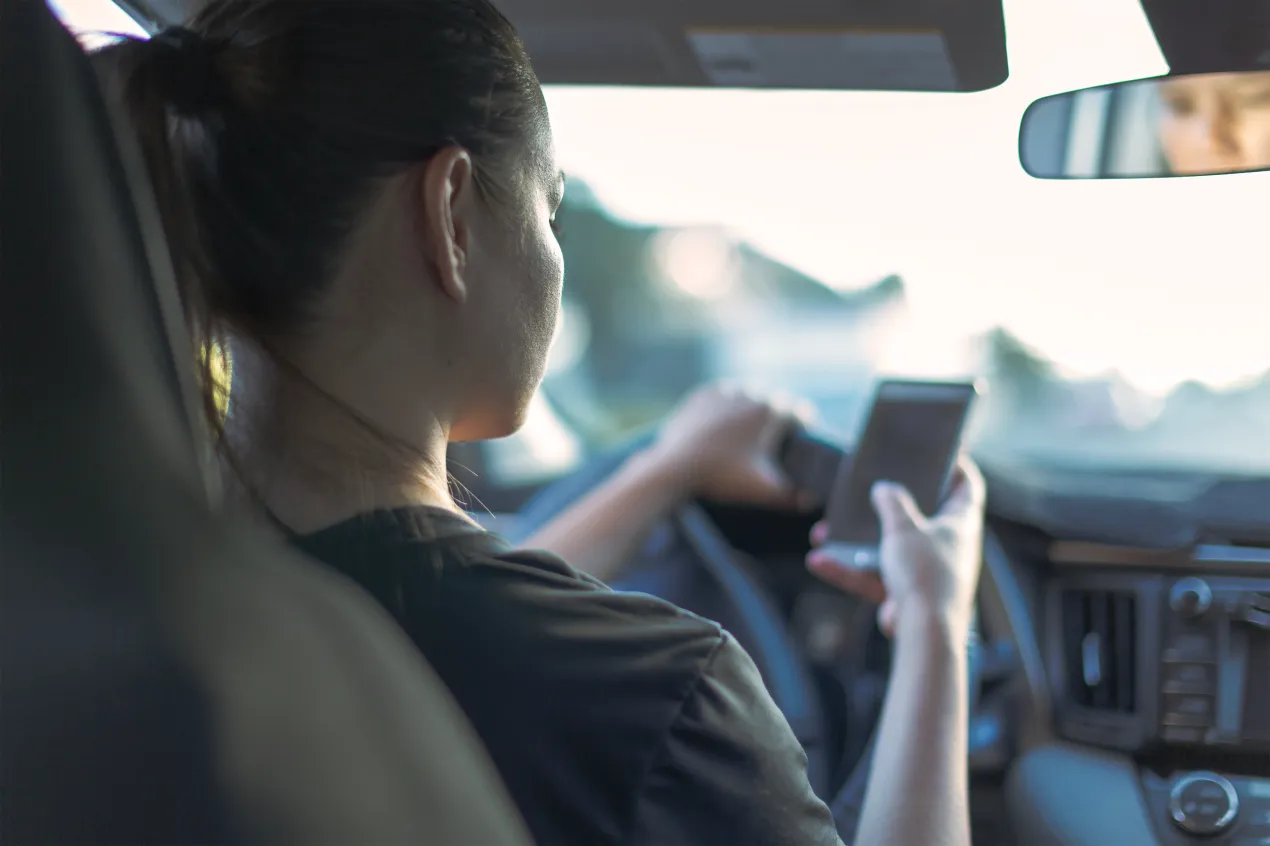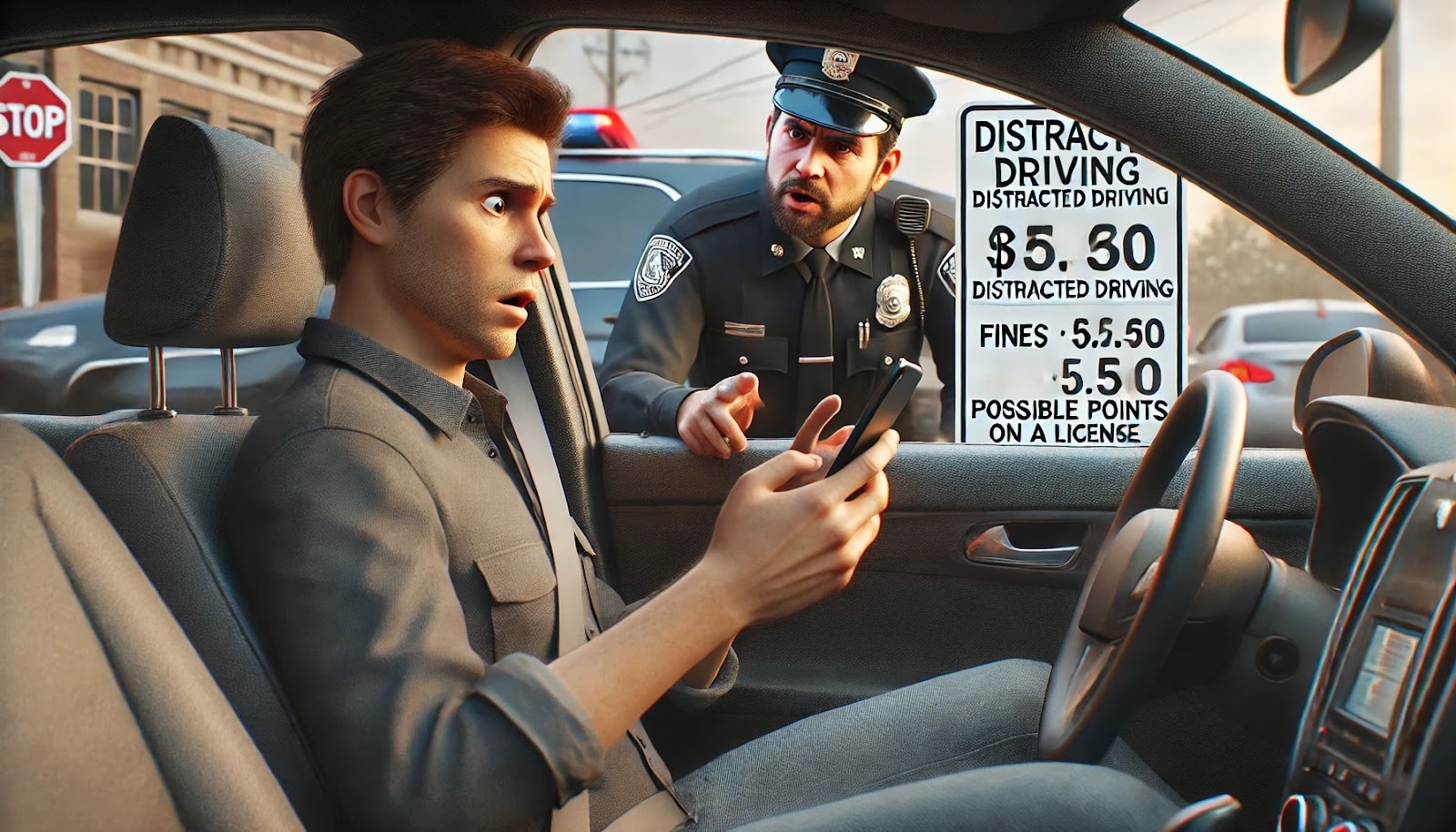The punishment for distracted driving and drunk driving is unequal, despite both presenting significant dangers to road safety.
This article explores the reasons for this disparity, the current penalties associated with each offense, and the pressing need for policy changes to ensure equal treatment for both types of dangerous driving.
While both distracted and drunk driving are hazardous, they are frequently misunderstood.
Distracted driving involves activities that divert attention from driving, such as texting or using a handheld device, a problem exacerbated by technological advancements.
In contrast, drunk driving involves driving under the influence of alcohol, which impairs a driver’s motor skills and judgment. Though distinct, both behaviors can lead to serious accidents, highlighting the need for an effective response.
What is Distracted Driving?
Distracted driving refers to any activity that diverts a driver’s attention from the task of driving. This can include using a cell phone, programming a GPS, eating, or conversing with passengers.
Texting while driving is particularly dangerous, as it can distract a driver for around 4.6 seconds enough time to cover the length of a football field at high speed without looking. These distractions impair the driver’s ability to react swiftly to road hazards.
Avoiding distractions such as texting, using a phone, or programming a GPS can reduce the risks associated with distracted driving.
Distractions can be physical, like fiddling with controls, or cognitive, like being mentally distracted. Young adult drivers, in particular, are more prone to these distractions, underscoring the need for stricter laws and better traffic safety education.
What is Drunk Driving?
Drunk driving occurs when a driver operates a vehicle with a blood alcohol concentration (BAC) above the legal limit, commonly set at 0.08%.
Alcohol consumption significantly impairs motor skills, judgment, and reaction time, making it incredibly dangerous to drive. Even drivers with a BAC below the legal limit can still experience impaired driving, which can lead to drunk driving charges.
For safety, it’s recommended to arrange alternative transportation, such as a taxi or rideshare, even after consuming just one alcoholic drink.
Driving under the influence endangers both the driver and other road users, highlighting the critical need for public awareness and strict enforcement of laws.
Distracted Driving vs. Drunk Driving Punishment
The risks of distracted driving are severe. Engaging in non-driving activities while driving significantly increases the risk of accidents and fatalities.
These incidents can lead to long-lasting personal, financial, and social consequences that persist beyond the immediate penalties.
Impact on Reaction Time
Activities like texting or eating while driving can distract a driver for a dangerous period, equivalent to driving the length of a football field without paying attention.
These distractions dramatically reduce a driver’s ability to respond quickly to sudden changes in the road, increasing the likelihood of accidents.
Also Read: Are Red Light and Speed Cameras Just a Cash Grab by Cities?
Statistics on Distracted Driving Accidents
In 2022, distracted driving was responsible for 3,308 traffic fatalities in the U.S., illustrating the severe consequences of this behavior.
With around nine deaths occurring daily from distracted driving, it is clear that urgent action is needed.
Campaigns such as ‘Faces of Distracted Driving’ and ‘Put the Phone Away or Pay’ aim to educate the public about the real-life consequences of distracted driving through victim stories and statistics.
The Dangers of Drunk Driving
Distracted Driving vs. Drunk Driving Punishment
Drunk driving also presents significant public safety concerns, greatly increasing the chances of severe crashes and fatalities. The dangers of drunk driving require strict enforcement and heightened awareness to protect road users.
Effects of Alcohol on Driving Ability
Alcohol impairs a person’s motor skills, judgment, and overall ability to drive. Even with a BAC below the legal limit, alcohol can still negatively affect a driver’s concentration and reaction time, increasing the risk of accidents.
Statistics on Drunk Driving Crashes
As a driver’s BAC increases, so does the risk of a crash. A driver with a BAC of 0.08 is four times more likely to be involved in a crash, emphasizing the dangerous impact of alcohol on driving.
In New York, for instance, alcohol is involved in approximately 30% of fatal accidents, demonstrating the critical need for stricter drunk driving laws.
In Canada, over 1,200 deaths annually are attributed to impaired driving, underscoring the significant threat drunk driving poses to public safety.

Comparing Penalties for Distracted Driving vs. Drunk Driving
Distracted Driving vs. Drunk Driving Punishment
Although both distracted and drunk driving are dangerous, the legal consequences for each are vastly different.
Distracted driving is generally considered a civil infraction, while drunk driving is treated as a criminal offense with much harsher penalties.
Legal Consequences for Distracted Drivers
In many places, distracted driving is treated as a civil infraction rather than a criminal offense. This typically results in fines and points added to the driver’s license, with points being assigned only after multiple violations.
Despite the growing prevalence of distracted driving, only a few states have passed laws banning all electronic device use while driving.
Public support for stricter penalties for distracted driving is strong, with many people advocating for these offenses to be treated as seriously as drunk driving. This reflects an understanding of the dangers posed by distracted driving and the need for tougher laws.
Legal Consequences for Drunk Drivers
The penalties for drunk driving are more severe, including jail time, large fines, and license suspension. In Michigan, for example, offenders can face fines up to $500, community service, and a suspended license.
Repeat offenders face even harsher penalties, such as a minimum of 120 days in jail for a third offense. These penalties reflect the severe public safety risk posed by drunk driving and the need for strict enforcement.
Enforcement Differences Between Distracted and Drunk Driving
Distracted Driving vs. Drunk Driving Punishment
Enforcement of distracted driving and drunk driving laws differs significantly, affecting how penalties are applied for each offense.
Distracted driving typically results in civil infractions, leading to less severe consequences, while drunk driving cases are handled more stringently.
Police Officers’ Role in Distracted Driving Cases
Detecting distracted driving is challenging for law enforcement, as officers often don’t check for phone use unless involved in a fatal crash. Without solid evidence, it is difficult for officers to enforce penalties effectively.
In contrast, drunk driving cases typically rely on chemical tests, which provide concrete evidence of impairment.
Implied Consent Laws for Drunk Drivers
Implied consent laws require drivers suspected of drunk driving to submit to chemical tests, which is not the case for distracted driving.
These laws allow officers to administer breathalyzer tests without a warrant, and refusal to take the test results in penalties such as license suspension.
This legal framework expedites addressing drunk driving cases and ensures accountability, highlighting the disparity in enforcement between the two offenses.
Also Read: Will Biometric Sensors in Cars End Drunk Driving Forever? Car Safety Using AI
Long-Term Consequences of Driving Offenses
Driving offenses, whether distracted or drunk driving, can have lasting consequences beyond immediate legal penalties. These hidden repercussions can affect a person’s financial situation, career, and reputation.
Insurance Costs
After a conviction for either distracted or drunk driving, offenders often face significant increases in insurance premiums. Rates can rise by up to 100%, imposing a substantial financial burden on offenders.
Insurance companies typically consider drivers high-risk for up to three years, extending the financial impact well beyond the conviction.
Employment Implications
A driving offense record can significantly harm employment prospects, particularly in jobs that require driving.
Employers may view a history of serious driving offenses as a sign of poor judgment, which can affect hiring decisions. This can lead to long-term career setbacks and diminished earning potential.
Calls for Policy Change
The increasing awareness of the dangers of distracted driving has led to calls for stronger policies.
Public support for stricter laws is growing, with surveys showing about 90% approval for texting bans and 70% support for prohibiting handheld phone use while driving.
Advocating for Stronger Distracted Driving Laws
Many states are ramping up fines and penalties for distracted driving to reduce this dangerous behavior.
Between 2018 and 2020, the number of states banning handheld phone use while driving grew significantly, signaling a shift toward tougher distracted driving laws.
The ‘three Es’ Enactment, Education, and Enforcement have proven effective in changing driver behavior and reducing traffic accidents.
Public Awareness Campaigns
Public awareness campaigns play a crucial role in reducing distracted driving rates by educating drivers about its risks.
Strategies include social media outreach, workshops, and public service announcements, often featuring personal stories and shocking statistics to underscore the consequences of distracted driving.
Both distracted driving and drunk driving are highly dangerous behaviors that threaten public safety. However, the penalties and enforcement methods for these offenses are currently unequal.
By raising awareness, advocating for stronger laws, and supporting educational campaigns, we can work toward achieving equal treatment for both offenses and ensuring safer roads for everyone.

